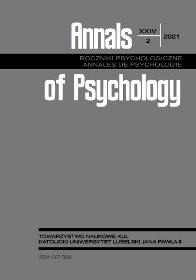What Do Teenagers and Young Adults Think and Feel About Their Peers with Cancer? A Quantitative and Qualitative Analysis of Explicit and Implicit Prejudices
What Do Teenagers and Young Adults Think and Feel About Their Peers with Cancer? A Quantitative and Qualitative Analysis of Explicit and Implicit Prejudices
Author(s): Sławomir Trusz, Hanna Stępniewska-GębikSubject(s): Social Sciences, Psychology, Individual Psychology, Clinical psychology
Published by: Towarzystwo Naukowe KUL & Katolicki Uniwersytet Lubelski Jana Pawła II
Keywords: cancer; teenager/young adult; stigma; explicit/implicit stereotype and prejudice
Summary/Abstract: The social stigma of cancer is a powerful source of stereotyping and prejudice against people affected by oncological disorders. Two cross-sectional studies attempted to (1) provide a formal and content characteristic of the stereotype of teenage cancer patient and (2) analyze explicit and implicit prejudice against them. In the first study, 2,370 middle school students proposed open-ended descriptions and quantified 50 attributes representing physical appearance, cognitive, task-oriented, social, and emotional functioning of the teenage cancer patient. In the second study, 207 undergraduate students of education completed the Implicit Association Test, which contrasted the teenage cancer patient with a teenager as a reference category. Content analysis of 11,191 open-ended descriptions and exploratory factor analysis of 50 attributes showed that teenage cancer patients were characterized in the emotional, social, and physical appearance domain. The IAT revealed that teenagers with cancer automatically induced moderate negative prejudice not linked with similarly negative explicit prejudice. Negative explicit and implicit prejudice suggests that teenagers with cancer may be omitted or disfavored by classmates and teachers, therefore they require special treatment in school and out-of-school environments. The findings and their practical implications were discussed in light of theories of stigmatization, stereotyping, and prejudice against cancer patients.
Journal: Roczniki Psychologiczne
- Issue Year: 24/2021
- Issue No: 2
- Page Range: 139-158
- Page Count: 20
- Language: English

